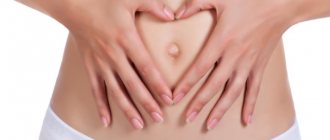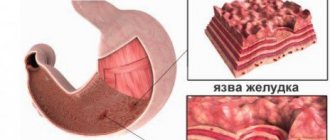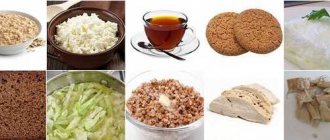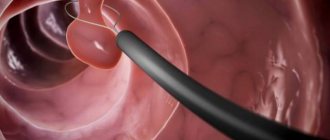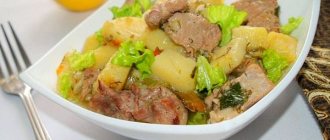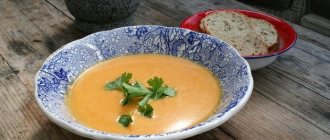Atrophic gastritis is considered a precancerous condition of the gastric mucosa.
It develops due to the fact that young mucosal cells that have lost their specialization cease to perform their function, that is, to produce gastric juice. Instead, they begin to multiply uncontrollably, filling the inner surface of the stomach wall. Producing mucus instead of gastric juice, they cease to take part in the digestion process.
The disease manifests itself in different forms, each of which has its own symptoms. In practice, specialists do not have a uniform approach to treating pathology. One opinion agrees that the formed process cannot be corrected, since the repurposed glandular cells cannot be transformed into their previous state. But it is quite possible to stop the course of the disease at any stage. And in this, diet plays an important role in atrophic gastritis of the stomach.
For what diseases is it prescribed, table number
After diagnosis, the doctor determines the level of hydrochloric acid in the body of the stomach and classifies the disease into 2 types:
- With high acidity.
- With low acidity.
For these types of disease, different diets and different medications (and, if necessary, surgical) treatment are prescribed.
With high acidity
The most common disease among this species is associated gastritis, caused by the bacteria Helicobacter Pylori, or type B gastritis. If it is superficial, it often develops against the background of increased acidity in the body.
Then it is important to exclude all acidic foods that could somehow further irritate the mucous membrane of the most important digestive organ. If the disease worsens, the doctor may even prescribe fasting for 2-3 days.
This will depend on:
- Stages of the disease.
- Clinical picture.
- Etiology – causes of occurrence.
- Pathogenesis – the mechanism of disease development.
- Features of the patient’s physiology, other factors.
In case of exacerbation, tables No. 1, 2 are indicated - herbal decoctions, vegetarian broths, steamed food based on vegetables and non-acidic fruits.
In chronic forms, table No. 5 is prescribed, containing a wider range of foods with a reduced content of acid and vitamin C.
With reduced
Atrophic gastritis is always associated with a decrease in hydrochloric acid . Regardless of the type of pathology it belongs to (focal, associated or cardio insufficiency - a poorly functioning valve connecting the stomach and duodenum), it requires a certain diet, the purpose of which is to normalize gastric secretion and increase the production of hydrochloric acid.
Therefore, diets of tables No. 1, 2, 5 can include foods rich in vitamin C and acid-containing foods.
For chronic
For this type of disease, table No. 5 is recommended, which includes all the beneficial substances and trace elements:
- protein (meat, egg, fish) – up to 100 grams daily;
- carbohydrates (porridge, pasta, vegetables) – up to 300 g daily;
- fats (oils) – up to 100 grams daily;
- salt – up to 10 grams daily.
An individual diet is developed for each patient, which should help normalize the microflora of the stomach and stabilize its functionality.
The products must contain the necessary microelements: potassium, calcium, magnesium, phosphorus, iron.
Watch the video, which details the principles of treatment table No. 5:
With focal
The purpose of nutrition for this type of gastritis is to reduce and subsequently eliminate the source of inflammation of the stomach walls. Therefore, treatment begins with a strict diet - table No. 1, which includes herbal decoctions, in particular rose hips, and alkaline still water.
As the inflammation subsides, the patient is transferred to table No. 2 - low-fat broths, vegetarian purees. Salt consumption is reduced to 6 grams per day.
Next is video about diet No. 2:
With damage to the antrum
This type of gastritis is characterized by inflammation of the lower parts of the organ. Requires a long-term diet of table No. 1, 1-a, 2.
Drinking a lot - up to 2 and a half liters per day, small portions of broths and pureed foods will help normalize the acid balance in the stomach.
More detailed information about diets number 1 and 1a can be found here:
Principles of a therapeutic diet
It is important not to return to old eating habits and to avoid violations that lead to a sharp progression of the pathology - the list of prohibited foods must be remembered by heart
For atrophic gastritis, a special diet No. 2 has been compiled. For each individual form of the disease it changes, but the basic principles remain unchanged:
- Products are subjected to gentle heat treatment: boiling in water, steaming, stewing, baking without oil.
- Ready-made dishes are crushed: ground, passed through a meat grinder or punched with a blender.
- Soups are prepared with a second weak broth, vegetable broth, and water.
- A minimum of spices are used.
- It is preferable to cook porridge in water, and milk and butter are added after cooking.
- You cannot eat fresh bread; yesterday's unleavened baked goods are allowed.
- Be sure to include foods rich in vitamin C in the diet to stimulate gastric secretion.
- Tea, compotes, juices should be drunk between meals, not before or after it.
- Fresh fruits are included in dietary table No. 2, but they must be fully ripe. You should not overuse citrus fruits, although they contain vitamin C. Citric acid has an aggressive effect on an inflamed stomach.
Basic principles
The diet for the atrophic form of the disease has a number of clear rules:
- Food should be prepared by steaming, boiling, stewing or baking. Fried foods are completely excluded from the diet.
- Food is consumed at a temperature of 36-37 degrees.
- Used in crushed, grated form.
- Food intake is carried out 5-6 times a day in small portions.
- One dose should contain no more than 200 grams, caloric content - no more than 250-300 kcal.
- During the day, the patient should drink up to 2.5 liters of alkaline still water.
Treatment with medications
Therapeutic measures for inflammation of the stomach are aimed at eliminating the etiological factor and regulating pathogenetic processes. If atrophic gastritis occurs, diet and medication treatment should be carried out simultaneously. This is a necessary condition for the patient’s recovery, since both directions of therapy complement each other.
In order to eradicate the pathogen, antibacterial therapy is used, which is included in the protocol along with bismuth preparations and proton pump inhibitors. In cases of high acidity, antacids, gastroprotectors, and gastrointestinal motility regulators are additionally prescribed. Against the background of gastritis with low acidity, replacement therapy drugs and enzymes are used. Pain syndrome is relieved with antispasmodics.
Pros and cons of the method, contraindications
You cannot prescribe this or that diet for yourself . After all, the doctor takes into account your condition, the presence of other chronic diseases or concomitant pathologies, if the diagnosis reveals:
- Bulbit is a lesion of the duodenal bulb.
- Biliary or biliary reflux gastritis is associated with a violation of the bile ducts, when bile refluxes into the stomach, which causes irritation of the mucous membrane and an inflammatory process.
- Esophagitis is a disease of the esophagus, which is also characterized by the same symptoms as gastritis: heartburn, pain in the stomach, diarrhea or constipation.
These diseases are closely interrelated, one can become a provocateur of the other. But with these diseases, acidity increases, therefore, the diet will be different.
Is it possible to eat pumpkin if you have gastritis?
Pumpkin is useful for gastritis Pumpkin is often included in the diet for gastritis, as well as other disorders of the gastrointestinal tract. Its pulp contains fiber, a large amount of vitamins and useful components, including:
- vitamins C, groups B, K, A, E, T;
- phosphorus and magnesium;
- carotene;
- iron and potassium;
- zinc and copper.
Pumpkin products increase the secretion of bile, soothe the intestines during enteritis and colitis, eliminate the inflammatory process and are easily absorbed by the body.
Nutrition options, recommendations for preparation for men and women
When relieving the acute form after fasting and tables No. 1 and 2, warm liquid porridges containing a large amount of carbohydrates are prescribed. They are necessary for the body for the quality functioning of the digestive system.
When developing a diet for a week, the doctor takes into account the condition of the stomach at this stage of treatment.
If he sees positive dynamics, he will be able to expand the diet and include additional products in the diet. Then, if you continue to diet, your menu for a week with 6 meals a day might look like this:
1st day:
- Porridge on water with the addition of raisins.
- Yogurt, bread.
- Pumpkin puree.
- Chicken breast.
- Vegetable broth.
- Stewed zucchini.
Day 2:
- Pumpkin puree.
- Berry mousse.
- Ear.
- A piece of steamed fish.
- Pumpkin porridge;
- Cottage cheese.
3rd day:
- Cottage cheese.
- Porridge with honey.
- Beef-based puree soup.
- Stewed zucchini.
- Grated fresh cucumber, bread.
- Buckwheat liquid porridge.
4th day:
- Liquid porridge on water.
- Yogurt, cottage cheese.
- Fish soup.
- Berry puree.
- Vegetable puree with bread.
- Cottage cheese.
Day 5:
- Oatmeal with added vegetable oil.
- Cheese, bread, butter.
- Cream soup.
- Chicken meatballs.
- Stewed zucchini.
- Grated cucumber with vegetable oil.
Day 6:
- Porridge with milk.
- A cheese sandwich.
- Pumpkin puree with berries.
- Noodle soup.
- Steamed egg.
- Stewed zucchini with parsley.
Day 7:
- Cottage cheese.
- Porridge made with milk with added butter.
- Meat soup with noodles.
- Sandwich with butter and cheese.
- Cucumber salad.
- Bread, yogurt.
Women often present with the first symptoms of gastritis, so their diet from the first days of treatment is much wider than that of men who present with an attack of chronic gastritis.
Any disease is easier to treat in the initial stages of development.
Variants of atrophic gastritis
Atrophic changes in the mucous membrane in most cases are preceded by other damaging factors. The main cause is Helicobacter pylori infection. The bacterium causes damage to the epithelium and increased acidity in the stomach, especially affecting the antral mucosa. As the pathology progresses, various forms of the disease may occur, which are reflected in the table.
| · Rye bread; | |
| Meat, poultry, fish | · beef; |
| · fat meat; | |
| Cereals | · buckwheat; |
| · beans; | |
| Dairy products, eggs | · low-fat cottage cheese; |
| · fried eggs; | |
| Vegetables fruits | · cabbage; |
| · pickles; | |
| Sweets | · marmalade; |
| · confectionery; | |
| Beverages | · cocoa with milk; |
| · coffee; | |
| Type of gastritis | Characteristics |
| Focal | Single areas of inflammation with atrophy appear on the surface of the mucosa, the production of gastric juice and pepsin is moderately reduced |
| Diffuse | The damage spreads to all parts with gradual degeneration of cells and a decrease in acidity. Epithelial transformation increases the risk of malignant neoplasia and the formation of a zero-acidity state |
| Antrum gastritis | It is characterized by damage to the mucosa mainly in the antrum with hyperproduction of hydrochloric acid. Over time, damaging factors lead to severe atrophy and decreased secretory function |
| Erosive | Single, or less often multiple, erosive defects with perifocal inflammation appear on the surface of the epithelium; at the initial stage, an asymptomatic course is characteristic |
| Hyperplastic | It is a variant of a precancerous condition, which is characterized by a polyposis process. Modified cells produce hydrochloric acid in insufficient quantities, which leads to a large accumulation of mucus in the lumen of the stomach and stagnation of the food bolus |
List of approved products
To quickly restore the functioning of the stomach, it is necessary to include microelements in the diet, which will help strengthen general and local immunity and ensure normalization of the organ’s functioning. These include:
- Fructose, sucrose – fruits, vegetables.
- Lactose – dairy products.
- Maltose - molasses, barley grains, rye.
- Fiber – fruits, vegetables, grains.
- Starch – potatoes, pasta.
- Pectin – carrots, dates, mangoes, etc.
- Glycogen – poultry liver.
For the atrophic form of the disease, everything sour is recommended:
- cottage cheese;
- yogurt;
- kefir;
- berries with high acidity;
- sour fruits;
- sauerkraut.
The doctor may include foods rich in vitamin C and acids in the diet to restore the balance of microflora in the stomach.
Citrus fruits may be prescribed - oranges, tangerines, lemons in limited quantities.
The diet of such patients includes fermented milk products, as they well increase the secretion of gastric juice and improve the digestive process.
Eggs contain microelements that strengthen the immune system, also lysicine - a substance that fights harmful microorganisms and rods, amino acids that help heal defects and ulcers. But it is necessary to cook eggs correctly - steamed as an omelet or eaten raw .
Lean types of meat will be recommended, mainly game, poultry, beef, and rabbit. Cooking is also recommended by steaming or boiling.
Meat should be consumed in crushed form, in small portions. It is also recommended to consume boiled fish, rich in various microelements, in particular phosphorus, potassium, calcium, vitamins E, D, B.
Pasta is not contraindicated for almost any type of gastritis , except for acute ones.
Pasta contains microelements useful for the restoration of the stomach: fiber, which removes toxins; gluten, which covers the gastric mucosa with a protective film; vitamins B and E, which promote cell and tissue regeneration; minerals that strengthen the body as a whole.
For drinks, decoctions based on medicinal herbs are recommended , in particular, rosehip decoction, non-concentrated green teas, unsweetened and non-concentrated dried fruit compotes.
Principles of dietary nutrition for hypertension
When there is atrophic gastritis, nutrition is selected only individually. But without ignoring this basic condition, general principles are distinguished in gastroenterology:
- eating small meals frequently. Steam dishes, or blanch, boil or stew without adding oil, pureed or chopped;
- refusal of salt or its significant restriction ( up to 15 g per day );
- exclusion of coarse plant fiber from the diet;
- do not eat hot or cold foods;
- maintain a certain ratio of nutrients in the diet: proteins - 100 g , carbohydrates - 420 g , fats - 100 g ;
- The daily calorie intake should not exceed more than 3000 kcal .
What not to eat with atrophic gastritis:
- fresh bread, yeast baked goods;
- legumes - peas, beans, beans, soybeans;
- smoked and canned products, both meat and fish, and vegetables;
- fresh berries, fruits and vegetables;
- full fat fresh milk;
- nuts, chocolate, confectionery chocolate products;
- coffee, black tea, alcoholic and carbonated drinks, juices.
Recommended Products:
- light broth;
- porridge – semolina, oatmeal, rice;
- boiled poultry, rabbit, veal;
- eggs;
- natural butter and vegetable oil;
- low-fat fish;
- dairy products;
- jellies, mousses, marmalade, marshmallows, marshmallows;
- rosehip decoction, weak tea, mineral water (according to the acidity of the stomach).
What not to eat
In case of inflammation and thinning of the gastric mucosa, it is necessary to consume those foods that will minimally irritate it. Therefore, the doctor will immediately advise you to avoid :
- hot;
- fatty – this is milk, high-fat cream, fatty meats, fish;
- salty;
- smoked;
- carbonated;
- canned;
- acute;
- difficult to digest foods - raw vegetables and fruits;
- chocolate;
- nuts;
- mayonnaise;
- alcohol.
On a diet for gastritis of the stomach in atrophic form, it is not recommended to include black tea, coffee, or carbonated drinks in the menu.
Why is diet needed in the treatment of gastritis?
The appearance of focal atrophic gastritis directly affects digestion. The mucous membrane becomes thinner and loses its ability to produce sufficient amounts of gastric juice, mucus and enzymes that were involved in the breakdown and digestion of food. This process occurs gradually, and as a result, the stomach is no longer able to accept normal daily food. And since nutrients from food are not absorbed, not only the gastrointestinal tract, but also all organs suffer. Therefore, treatment of the disease is necessary.
How can proper nutrition help with atrophic gastritis? By properly processing food and replacing heavy dishes on the menu with easily digestible ones, the load on the stomach is removed. Food is digested faster, all nutrients and medications are better absorbed. Strict adherence to the diet 7 days a week makes it possible to live a normal life and not suffer from the symptoms of atrophic gastritis with low acidity.
GALINA SAVINA: “How easy it is to cure gastritis at home in 1 month. A proven method is to write down the recipe. » Read more >>
Advice from nutritionists
During treatment, the doctor gives recommendations on:
- Taking medications.
- Undergoing physical therapy.
- Application of traditional medicine techniques.
- Diet and diet.
Only by carefully following all the doctor’s recommendations can you achieve recovery or long-term remission.
If even one point is violated (using a prohibited product once), treatment may become ineffective.
